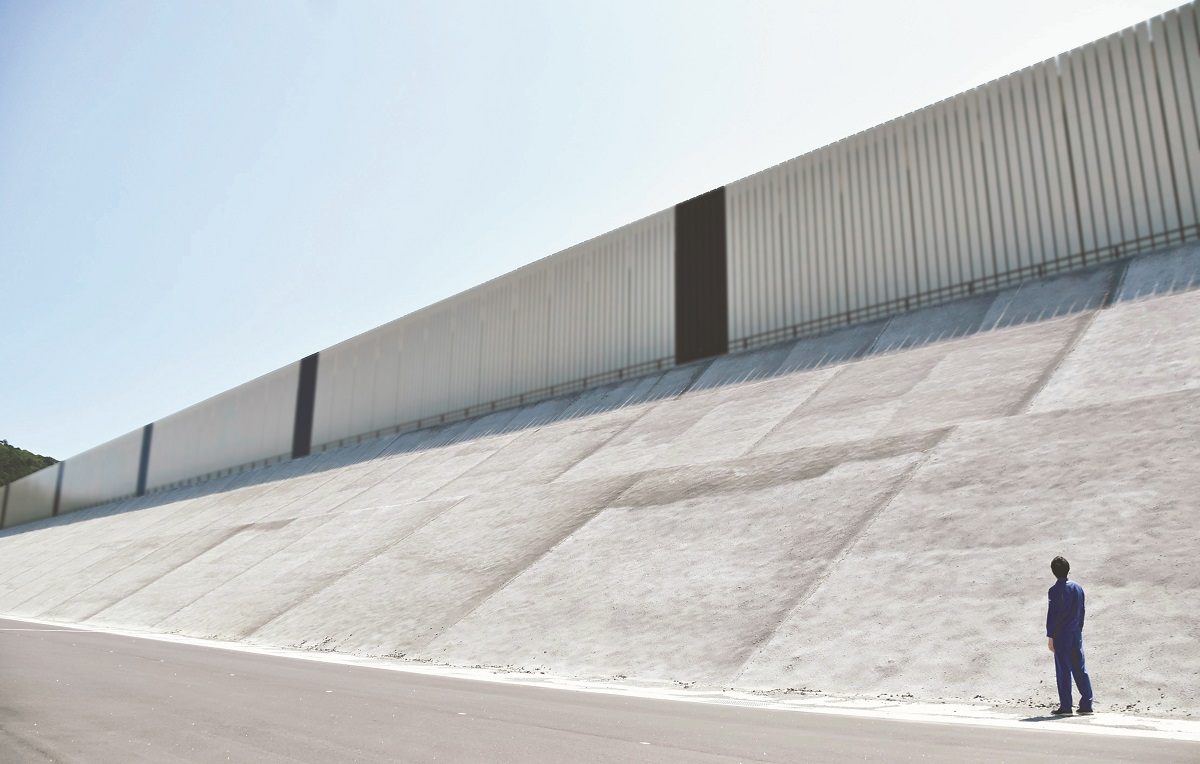Onagawa N-Plant’s Safety Measures Show Lessons Learned From 2011 Meltdown; Back-Up Power Source Kept High and Dry

The seawall built to protect Tohoku Electric Power Co.’s Onagawa nuclear power plant’s No. 2 reactor
20:00 JST, October 30, 2024
To protect Tohoku Electric Power Co.’s Onagawa nuclear power plant’s No. 2 reactor, safety measures have been put in place based on the new regulatory standards created after the 2011 meltdown of Tokyo Electric Power Company Holdings, Inc.’s disaster-hit Fukushima No. 1 nuclear power plant.
An 800-meter-long seawall, reaching 29 meters above sea level, has been built at the Onagawa plant. In addition, a gas turbine generator has been installed 60 meters above sea level to ensure a power supply even in the case of an accident. In the reactor building, a device has been installed to prevent hydrogen explosions by recombining any hydrogen that leaks from the containment vessel with oxygen.
Akio Yamamoto, a professor of nuclear engineering at Nagoya University, said, “[The standards are] more stringent than those of other countries, based on the idea of ‘taking all possible measures for safety,’ and took domestic and international disasters and research into consideration.”
The No. 2 reactor at Onagawa is a boiling water reactor, the same type that was used at the Fukushima No. 1 plant.
About 50 minutes after the 2011 Great East Japan Earthquake, a massive tsunami approximately 13 meters high – more than twice the maximum height assumed at the time – hit TEPCO’s Fukushima No. 1 plant, flooding almost the entire site. The power supply facilities, including emergency generators, were rendered inoperable, and critical functions such as reactor cooling and water circulation were lost, leading to a core meltdown.
"Society" POPULAR ARTICLE
-

M4.9 Earthquake Hits Tokyo, Neighboring Prefectures
-

Israeli Tourists Refused Accommodation at Hotel in Japan’s Nagano Pref., Prompting Protest by Israeli Embassy and Probe by Prefecture
-

M7.5 Earthquake Hits Northern Japan; Tsunami Waves Observed in Hokkaido, Aomori and Iwate Prefectures
-

Tsukiji Market Urges Tourists to Avoid Visiting in Year-End
-

High School in Kyoto Says Students Shoplifted during Recent School Trip to Bali, Indonesia
JN ACCESS RANKING
-

Tokyo Economic Security Forum to Hold Inaugural Meeting Amid Tense Global Environment
-

Keidanren Chairman Yoshinobu Tsutsui Visits Kashiwazaki-Kariwa Nuclear Power Plant; Inspects New Emergency Safety System
-

Imports of Rare Earths from China Facing Delays, May Be Caused by Deterioration of Japan-China Relations
-

University of Tokyo Professor Discusses Japanese Economic Security in Interview Ahead of Forum
-

Japan Pulls out of Vietnam Nuclear Project, Complicating Hanoi’s Power Plans























